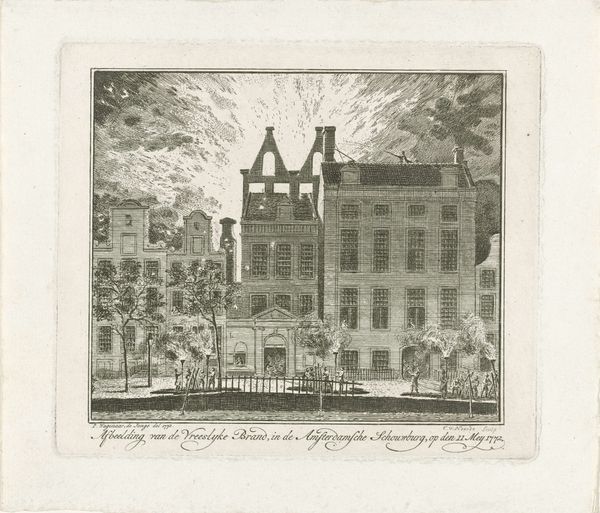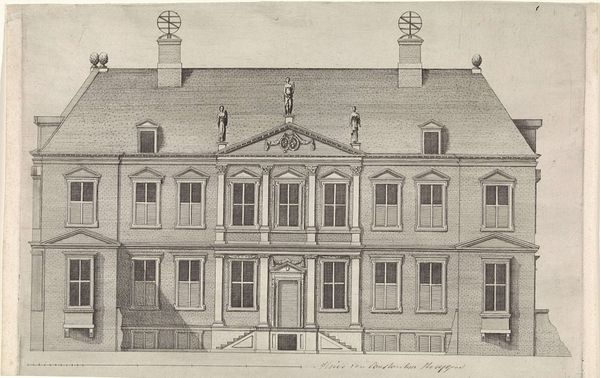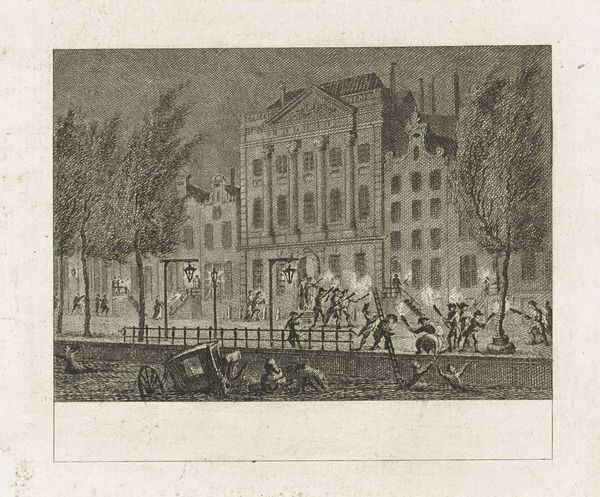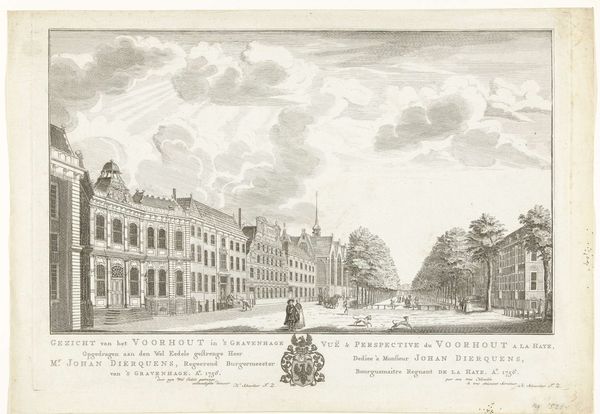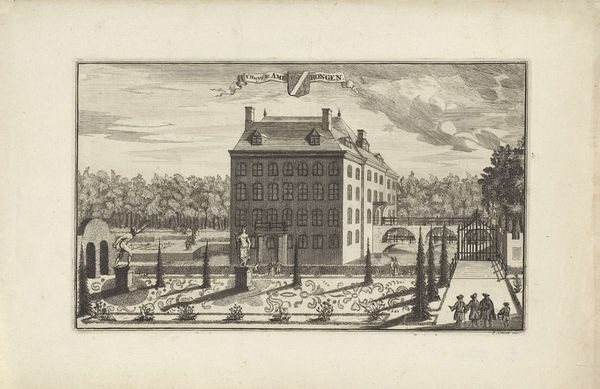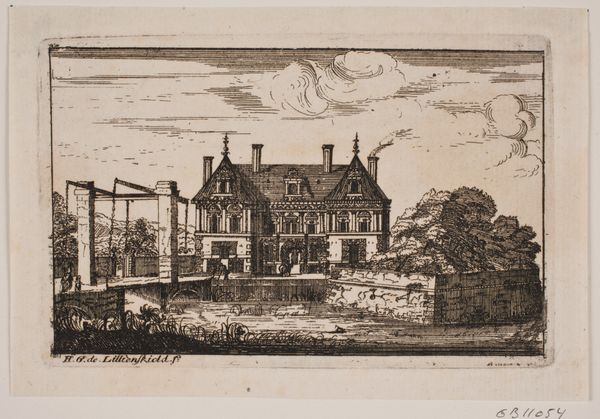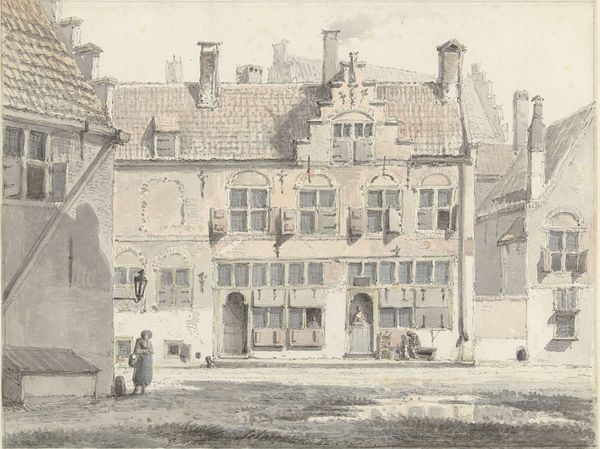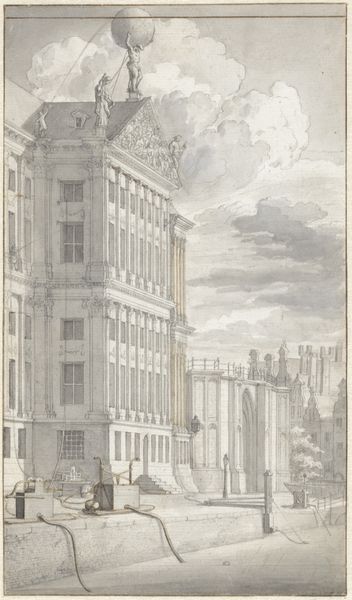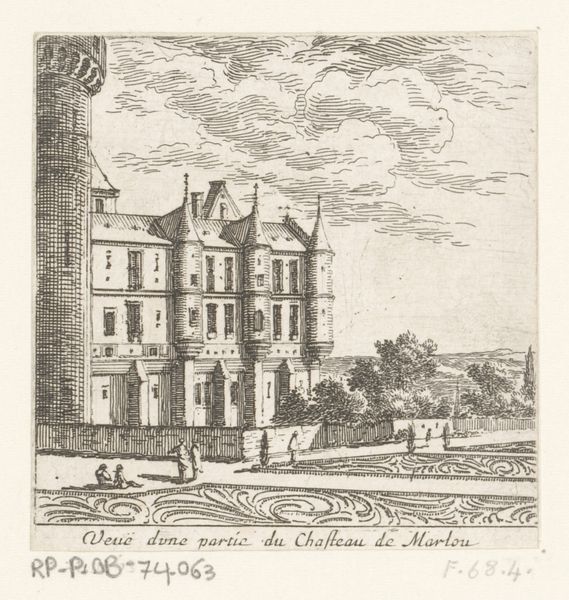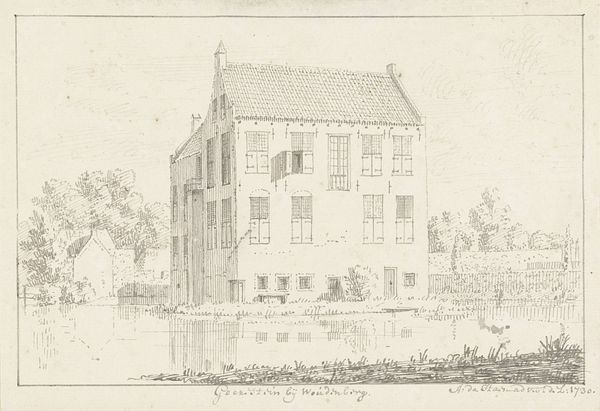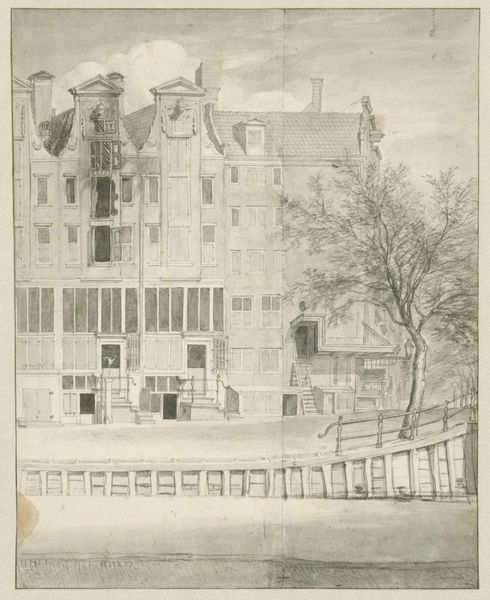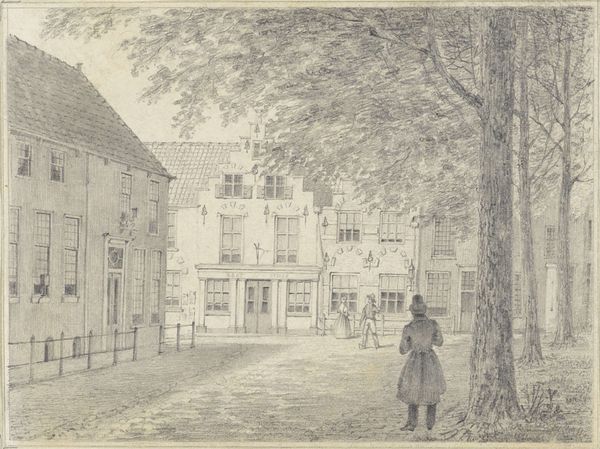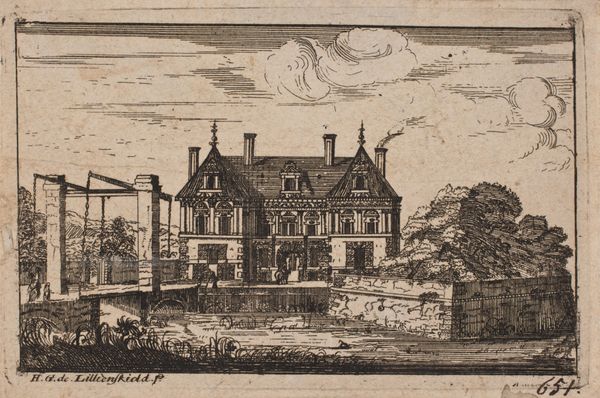
drawing, print, etching, architecture
#
architectural sketch
#
drawing
#
neoclacissism
# print
#
etching
#
architectural drawing
#
cityscape
#
history-painting
#
watercolor
#
architecture
Dimensions: height 129 mm, width 150 mm
Copyright: Rijks Museum: Open Domain
Curator: Cornelis van Noorde's 1772 print, "Brand van de Amsterdamse Schouwburg," depicts the burning of the Amsterdam theater. The work on view at the Rijksmuseum employs etching, among other print media to render the dramatic scene. Editor: The first thing that strikes me is the starkness. The sharp, angular lines of the buildings are contrasted against this swirling, almost chaotic sky of smoke. It really conveys the drama of the event, even centuries later. Curator: Absolutely. We can't separate the event depicted from broader dialogues happening at that time. Think about the role of theater, as both a cultural institution and a physical structure. What did its destruction represent symbolically in a rapidly changing Amsterdam? The social function of the theater was, of course, in its role to promote and solidify national narratives. Editor: I am especially interested in the labor and material costs that disappear when we consume media. The scale here appears relatively small, and it suggests it was a part of some broader print medium such as newspapers or perhaps handbills. One can then contextualize the materials used, like ink, paper, and the press that produced it. Its widespread dispersal could be a signal to understand the politics surrounding such a cultural event, for its rapid transmission to the public. Curator: Yes, the event definitely invited multiple readings. In this print, van Noorde visualizes this tension, creating a space to process what the destruction of the Schouwburg means for Amsterdam's cultural identity. A new theater building eventually came in its place. This transformation became tied to discussions about the city’s growth, anxieties, class, religion, and reform. It also tells a fascinating history of Dutch classicism. Editor: Examining prints and their reproductions—their source and cost—is vital for an understanding of their value and consumption by its contemporary audience. One reading I would suggest to future listeners is looking for material histories and how production of art informs our understanding of these historical moments and artistic trends, such as Classicism. Curator: Thank you. This is also a painful historical episode for the people involved and what it symbolized for Amsterdam’s citizens. Art helps us engage and remember such complex historical issues.
Comments
No comments
Be the first to comment and join the conversation on the ultimate creative platform.
